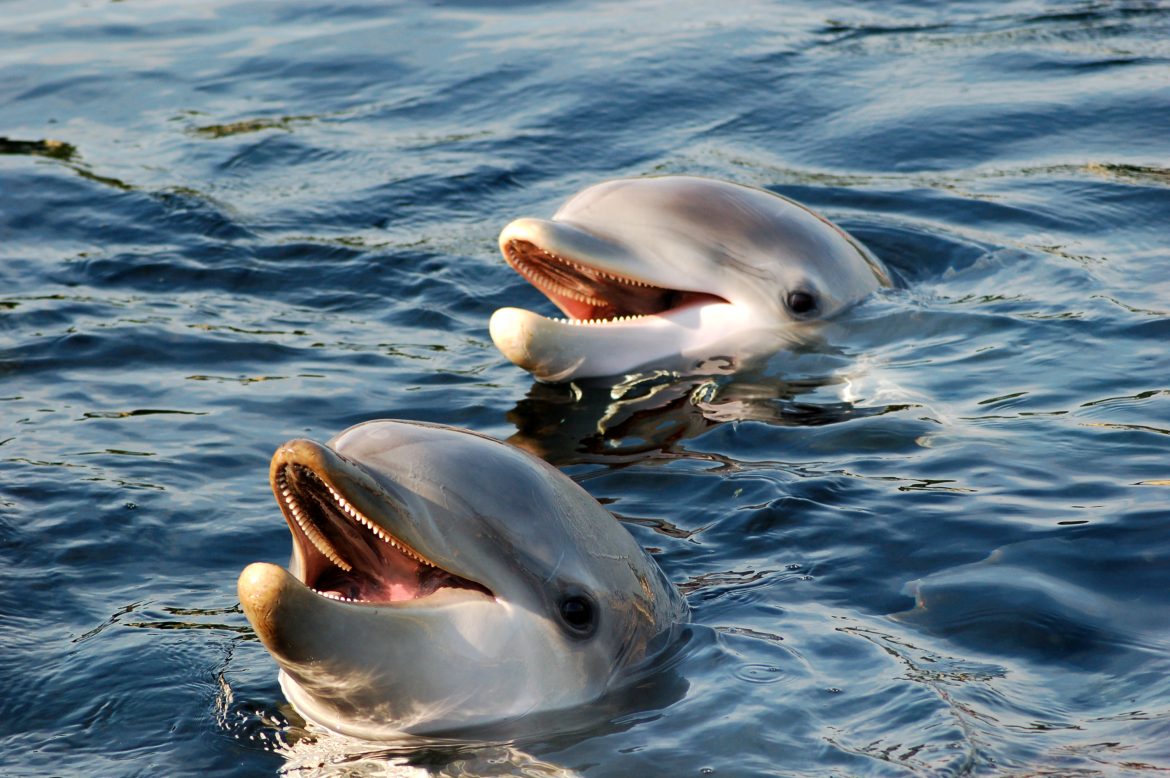Most of us know about dolphins from movies or water parks entertaining and performing in front of audiences young and old. But there’s more to these mammals than just trick animals.
Before man came on the scene, dolphins were in the seas for thousands of years before. Most of them are saltwater inhabitants, 38 species, although a small number, 5 species, can live in freshwater locations in the shallow waters of the continental shelves. No matter where they live, however, dolphins have to come up to the surface to breathe in cycle up to 30 minutes for larger species.
Dolphin skin is very sensitive to impacts and other elements in the water with most of them having a grayish/blue coloring but some species can have a black, white, light gray, bluish, pink or even a combination of these colors. With up to 100 teeth, they do not use them to chew, but rather to hold the fish and then swallow them whole.
Man’s relationship with dolphins evolved from occasional observation and contact to today’s close interactions and scientific studies to understand how this animal, considered one of the most intelligent animals on earth, survives in the wild.
Although studies are conducted in the wild, captivity has been most efficient in this research even though captivity does change some of the dolphins’ characteristics. One interesting phenomenon that has been found is that most times dolphins approach pregnant women very carefully because they can hear the beating of two hearts.
In the wild, the relationship with man has been fascinating. It’s been known that dolphins have round-up schools of fish to show fisherman where to place their nets. Captivating accounts have evolved about dolphins coming to the rescue of divers and boaters in trouble.
The connection with humans, both physically and emotionally, dates back to ancient times evidence of frescos in ancient palaces such as the one in Knossos in Crete and findings of civilizations suggesting dolphins be a spiritual connection between gods and humans.
Scientific studies of intelligence have excelled. Like humans it’s been found that dolphins have emotional sensitivities, are curious and form strong bonds within their pods. They establish social ties that are very much like humans. If one of them is injured the others will help him up to the surface to breathe.
With ongoing scientific studies, much is still to be learned about these creatures that have evolved from millions of years ago and how they will evolve into the future.
 Food
Food Farmers
Farmers Sustainable Living
Sustainable Living Living Planet
Living Planet News
News